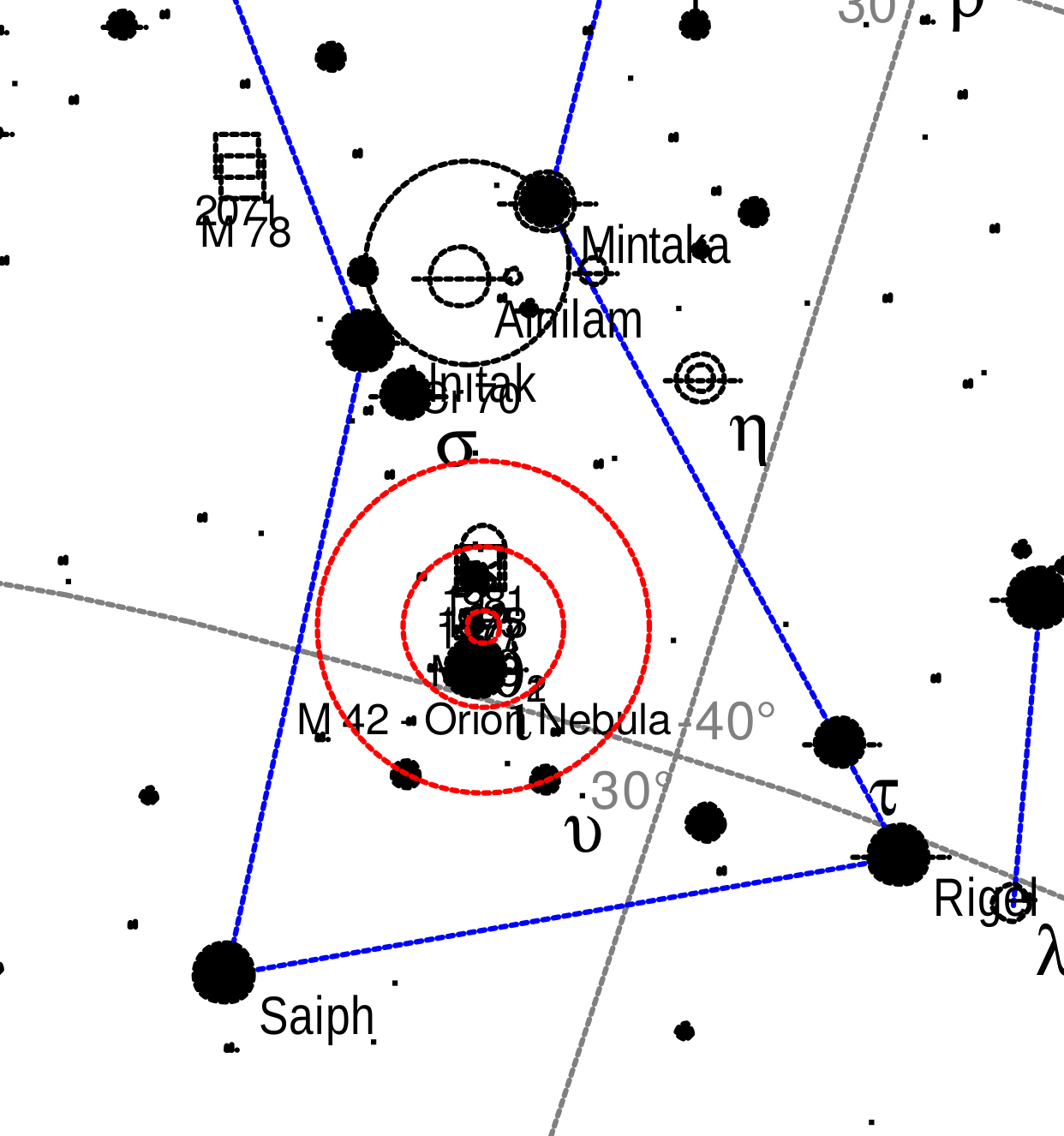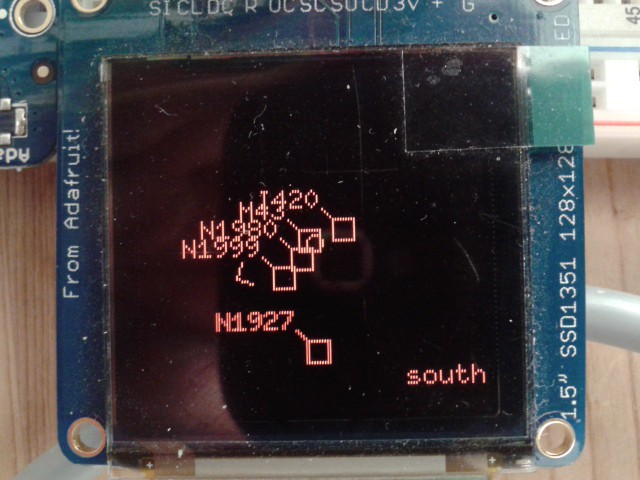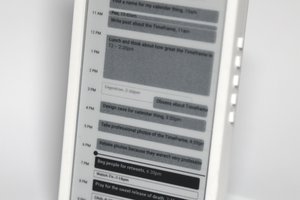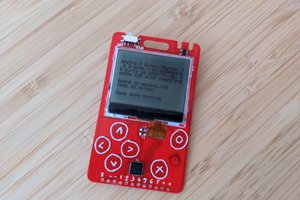How the Telrad works:
Here's a little drawing that shows how the Telrad works. It just shows the main parts:
 The Telrad contains a screen with three backlit circles. Light emitted from that screen is mirrored to a lens which brings the circles into infinity focus, and then (partially) reflected into the observer's view by a glass plate. The observer's eyes are focused at infinity, looking at a distant object. The resulting image contains the both the object and the red circles.
The Telrad contains a screen with three backlit circles. Light emitted from that screen is mirrored to a lens which brings the circles into infinity focus, and then (partially) reflected into the observer's view by a glass plate. The observer's eyes are focused at infinity, looking at a distant object. The resulting image contains the both the object and the red circles.
The size of the circles on the screen and the lens' focal length are chosen to have circles with 0.5°, 2° and 4° diameter. The screen can be moved to hit the right focus point. When you look through a Telrad, you'll see something like this:

How that relates to star charts:
Star charts contain circles with 0.5°, 2° and 4° around interesting objects and around points that are easy to find (bright stars). Here's a sample:
 The star chart/Telrad combo can be used to easily navigate through the night sky to find an object for observation.
The star chart/Telrad combo can be used to easily navigate through the night sky to find an object for observation.
What the explorad does:
The explorad replaces the Telrad's screen with an OLED display. Why an OLED?
At night, the eyes adapt to the darkness. This adaption is easily disturbed by bright light, especially with wavelengths which the eyes are sensitive to. The eyes are least sensitive to red light, and that's why the Telrad's circles are red. An OLED display has no backlight which could bleed unwanted wavelengths, and we can choose to display only red pixels. That way the eyes are least disturbed.
If only circles are displayed, the explorad does the same thing as the Telrad.
What the explorad also does:
In addition to displaying the Telrad circles, the explorad can determine the telescope's viewing direction and use that information to do two main things:
- display how the telescope must moved to bring a target into the field of view
- display nearby objects on the screen which might be interesting to look at.
Determining the telescope's viewing direction is not too hard. A 3D accelerometer is used to measure the altitude (angle between the horizon and the telescope's viewing direction) and roll. I tried using a magnetometer for the azimuth, but that didn't work well - I got distorted readings caused by almost every object around the sensor. That's why I'm attaching an optical encoder to the telescope's base to measure the azimuth.
Demo Video
showing the current hardware, Telrad circles, Target tracking, and nearby objects display:
The display you see in the video will replace the Telrad's fixed 3-circle screen.
Licenses
- Everything I write myself will be MIT license
- The teensyduino core has its own license included in many of the files, see https://github.com/PaulStoffregen/cores
- Adafruit CC3000 library: BSD
- The I²C library by nox: LGPL
- The TinyGPS library: LGPL
- The SdFat library (to be honest I'm not really sure if that's the one I'm using): GPLv3
If the SdFat library is used in the project, the whole project probably has to be published as GPLv3 (I guess).
 Christoph
Christoph When the mount orientation changes, new patches are loaded. That's the theory.
When the mount orientation changes, new patches are loaded. That's the theory.
 At the top, you can see the menu with the "Telrad Circles", "Target" and "Objects" icons activated (the first three from left to right). The "S" marker near the center is an artificial marker I needed for debugging, and it marks the horizontal south. The Target is "south" as well, indicated by the small "x" just below the "S".
At the top, you can see the menu with the "Telrad Circles", "Target" and "Objects" icons activated (the first three from left to right). The "S" marker near the center is an artificial marker I needed for debugging, and it marks the horizontal south. The Target is "south" as well, indicated by the small "x" just below the "S". Coming up next: the third attempt at object databases or a battery plus charger circuit for the input device.
Coming up next: the third attempt at object databases or a battery plus charger circuit for the input device.






 WJCarpenter
WJCarpenter
 Stavros
Stavros
 deʃhipu
deʃhipu
hello
what news ?
Bordeaux